Sticky rice is a chewier rice than regular white grain or jasmine rice. It is a bland taste, which is why it is always paired with another big entree or dipped in another dish. It requires more chewing than regular rice, think gummy worms, but is absolutely delicious.
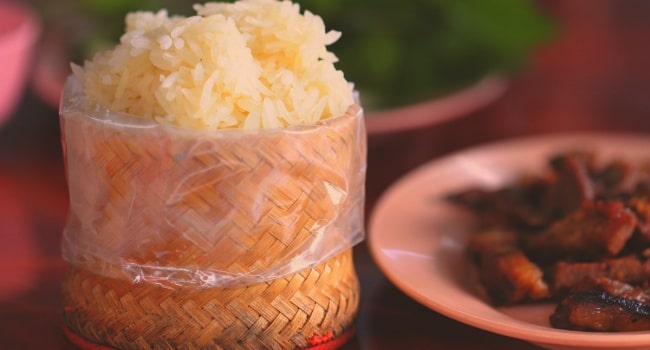
All about Laos sticky rice & the best dipping sauce to pair with
 Jolie LIEM
Jolie LIEM
 07/01/2026
07/01/2026
Sticky rice is the staple food of any Laotian meal. It is called “khao niew” and made from glutinous rice. It contains a higher sugar level than normal rice, which gives it its stickiness.
Despite the name (glutinous rice), Laotian sticky rice is gluten free and therefore great for people with celiac. Sticky rice is steamed and traditionally served in small cute bamboo baskets in Laos called “lao aep khao”.
Sticky rice is a traditional Lao and Thai base dish that is served and paired another delicious main meal. You typically do not eat sticky rice on its own unless it’s been transformed into a dessert that is doused in coconut milk or sugar (if you’ve had Lao food, what I’m referring to here is purple rice).
Sticky rice is a transparent and opaque rice that requires soaking overnight for preparations. Once cooked, the rice “sticks” to each other, and you use your hands to eat the rice by forming delicious little balls of rice and putting it into your mouth!
- What does sticky rice taste like?
- How Do You Eat Sticky Rice?
- Which dipping sauce best paired with sticky rice?
- Other Laotian dishes to pair with sticky rice
- Serving Sticky Rice with Bamboo Baskets
- Origins and Culture of Eating Sticky Rice
- Type of Rice Used to Make Sticky Rice
- How to Make Sticky Rice – the Authentic Way
What does sticky rice taste like?
How Do You Eat Sticky Rice?
Sticky rice is meant to be eaten with your fingers. You’ll grab a small piece that will fit in your mouth, roll it up into a small ball shape, and dip it into an entree and grab part of the entree OR dip it into your sauce and eat it.
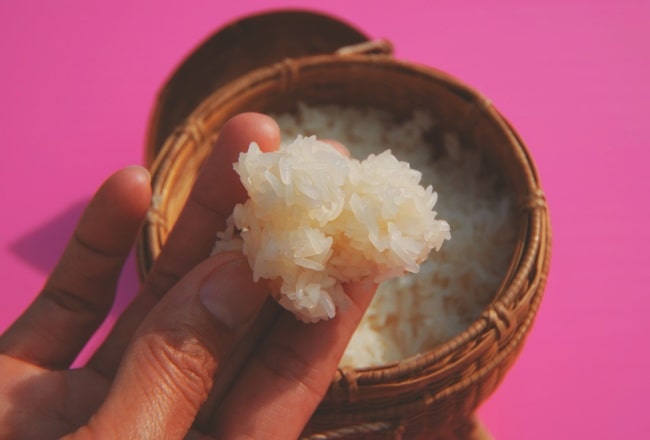
There are many types of dipping sauce in Laos, which lead us to the next questions…
Which dipping sauce best paired with sticky rice?
First, we will learn about some of the most popular dipping sauces that are usually eaten with sticky rice in Laos
Jeow Mak Len
Jeow Mak Len, Tomato Dipping Sauce, is perfect for summer. Tomatoes, chilies, and onions are grilled until starting to blister and char, then mashed with a mortar and pestle into a sauce. It is seasoned with lime, fish sauce, and cilantro. The sauce can be served with grilled pork and sticky rice (Khao Niew). It is also great with steamed or raw vegetables or steamed meat.
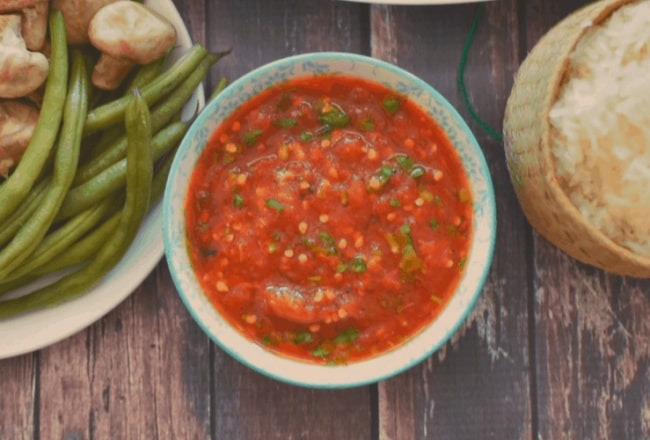
Jeow Bong
Jeow Bong is also called Luang Prabang chili sauce is a sweet and savory Lao chili paste originating from Luang Prabang, Laos. Jeow Bong is made with sundried chilies, galangal, garlic, fish sauce and other ingredients commonly found in Laos. Its distinguishing ingredient, however, is the addition of shredded water buffalo or pork skin.
It is eaten usually by dipping Lao sticky rice or a raw/parboiled vegetable in it. It's also a condiment for a Lao riverweed snack called Kaipen. Jeow bong lasts for a long time, does not spoil easily and can be either on the spicier or sweeter side, depending who makes it. Characteristically, it is both sweet and spicy.
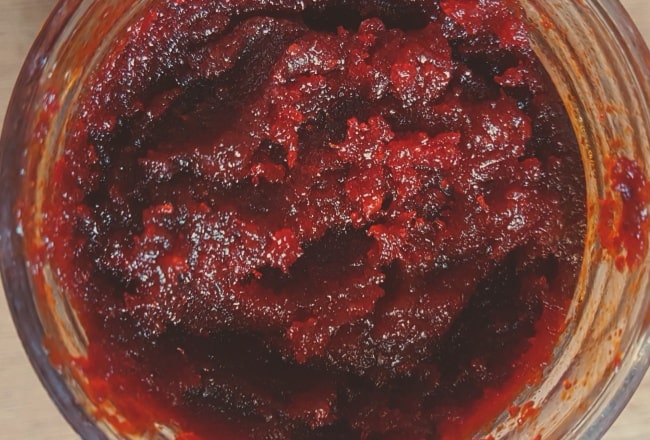
Jeow Mak Keua
A smoked and spicy eggplant dipping sauce typical from Laos. It reminds Babaganoush, with fish sauce instead of tahini. In Laos, it is served with glutinous rice (sticky rice), pieces of dried meat or vegetables to dip in the sauce. In Laos, the duo Jeow Mak Keua and Sticky Rice are a favourite breakfast in the school lunchboxes.
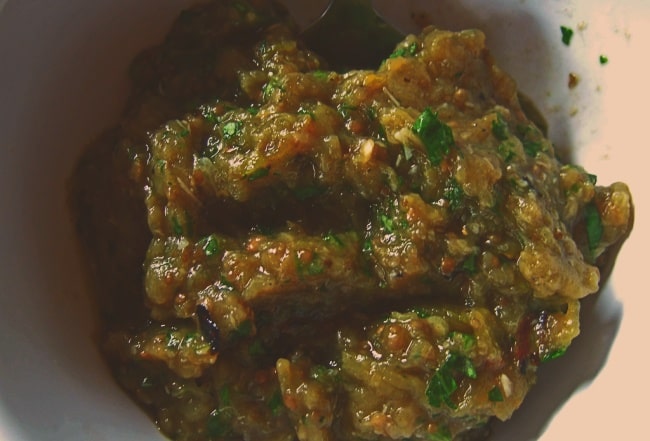
Jeow Som
Jeaw Som is a Laotian sauce that combines spicy, sweet, sour, and salty flavors.
The condiment is a staple in Lao cuisine and can be dipped with sticky rice, grilled meats, and vegetables.
**************
There are some other types of jeow such as Jeow Padaek, Jeaw Pahang, or Jeow Mak Phet Dib.
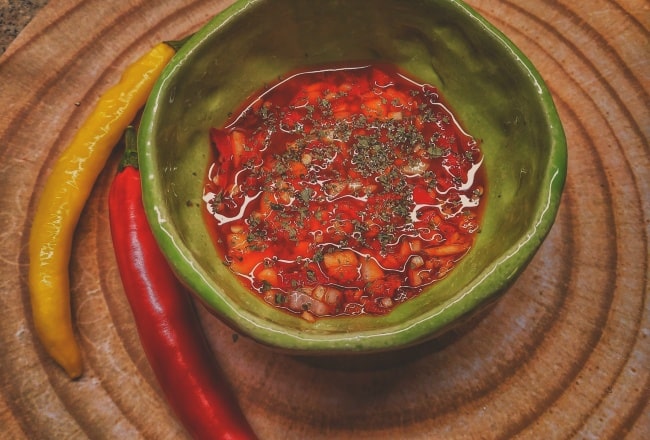
So, which dipping sauce is best paired with sticky rice?
What a tough question! The answer really depends on your taste and how familiar you are with Lao food. If you are new of these jeow, we recommend Jeow mak len for the good start. In case you really want to have a strong kick, try Jeow bong, which is really spicy, the favorite taste in Laos.
Other Laotian dishes to pair with sticky rice
Sticky rice is delicious with minced meat salad (laap) as well as spicy dipping sauce (jeow). In addition, once prepared, sticky rice can be further prepared for a delicious coconut milk dessert that is out of this world! Here are a few dishes that you can eat with sticky rice:
- Minced Meat Salad (larb)
- Papaya Salad
- Grilled briskets and meat
For me, the meat lover, sticky rice is best paired with Laos larb – the delicious traditional meat salad.
One more favorite way to enjoy sticky rice is to cook its variant of mango sticky rice
Mango sticky rice
Mango sticky rice is a traditional Thai dessert made with glutinous rice, fresh mango and coconut milk, and eaten with a spoon or sometimes the hands.
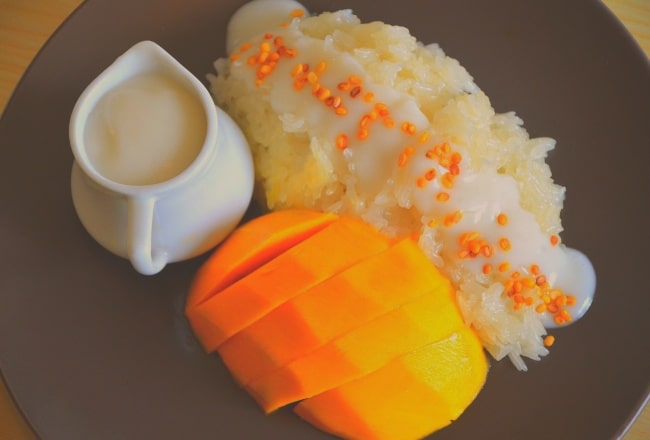
Serving Sticky Rice with Bamboo Baskets
For sticky rice not to harden, it is steamed, quickly kneaded, and put into a bamboo basket (like the one below). The basket is made of strips and slivers of bamboo, weaved together in a tight, cylindrical basket with a look.
When serving sticky rice, the bamboo basket is brought out in a communal way and shared as families and others dig in to grab a chunk for their plates.
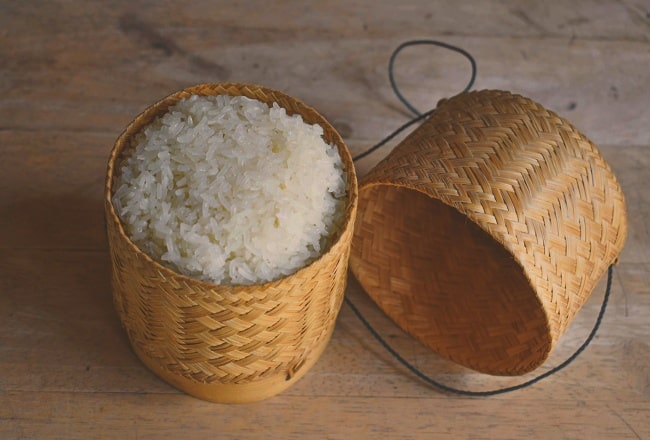
Origins and Culture of Eating Sticky Rice
Often, people associate sticky rice with Thai food. However, it is only specific to Northeastern Thailand. The neighboring country of Laos has sticky rice as a national staple.
Because Laos is landlocked, its cuisines have not had the fortune of being able to be exported as much as Thailand has. And that’s why sticky rice has been more commonly associated with Thailand (when in fact, Laos should get this credit).
Laos is where sticky rice is mainly eaten, but because they are neighbors, the Northeastern part of Thailand also eats sticky rice. Sticky rice has been around for over 4,000 years and is a major part of Laotian and Northeastern Thai culture.
Sticky rice is also a staple in some parts of other countries like China, Myanmar, Cambodia, and Vietnam.
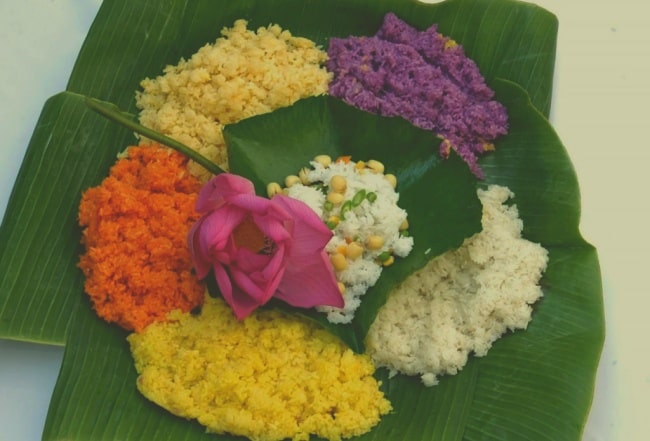
Sticky rice is grown in both the lowlands and uplands of Laos’s countryside. Because sticky rice requires less water to grow, it has more places that it can be harvested as compared to its white rice counterparts.
In Laos, sticky rice is typically prepared in a large batch in the morning, and that same batch is served and eaten throughout the entire day.
Buddhist monks in laos typically eat just one meal a day, and people provide sticky rice as donations because it will keep the monks fuller, longer.
Type of Rice Used to Make Sticky Rice
You need to purchase sticky rice which is commonly seen packaged as sweet rice. When you look at uncooked sticky rice, it looks like normal grain rice in size and shape, but the color is actually white and not transparent and opaque like jasmine rice.
That is not to say that sticky rice doesn’t come in other colors, it does. Unhauled sticky rice looks black and purple (and is absolutely delicious).
How Sticky Rice is Different from Other Rice
Sticky rice literally sticks together. When cooked right, it is soft and tender to the touch.
Khao niew (the Lao term for sticky rice) normally eaten with your hands and paired with another dish that you also eat with your hands by using your thumb to pair it together.
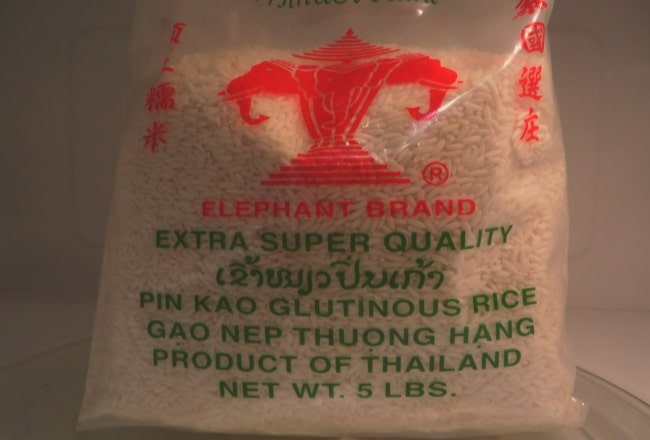
Is Jasmine rice sticky rice?
No, jasmine rice is a different grain of rice. While it may look similar, it is not the same thing.
Making Sticky Rice with Regular Rice
You cannot. It literally is like saying, “how do you make orange juice with apples?” You are just going to have to venture into your nearest Asian grocery store. If you find it difficult to differentiate the different types of rice, just ask the staff, you will give you the correct one.
Sticky Rice is NOT Sushi Rice
Sticky rice and sushi rice are two different products completely. While they are in the rice family, they are not used in the same manner. Sushi rice is different because it is short grained and starchy, and it is not as sticky and as heavy as sticky rice.
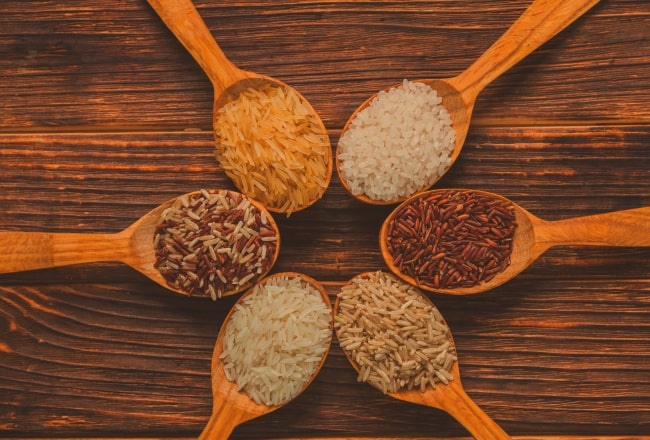
How to Make Sticky Rice – the Authentic Way
Preparation
First, you need to buy the suitable cooking wares to cook the dish.
- Bamboo Steamer
- Bowl for Soaking
Ingredients
- 2 cups of sticky rice about 1/2 cup per serving
- Water for cooking
You can now watch the video for the instruction of cooking Lao sticky rice
Instructions
- Put the rice in a bowl and cover with water, let it soak overnight
- Drain the rice and rinse with cold water a couple times
- Put water in the pot and bring to a boil
- Place the rice in the bamboo basket and set it on top of the pot making sure the basket is not in the water.
- Cook for 15 minutes and then holding the sides of the basket flip the rice over like you would flip an omelette. In one swift movement.
- Cook for an additional 5 minutes
- Put the rice in individual bamboo baskets or in a bowl and serve hot.
- The rice will be sticky and tender. Use a wooden spoon to serve.
Enjoy!
Note: if you are using a steamer basket instead of the specially made bamboo basket, do the same thing except place the rice in some cheesecloth, so you can flip it over.






















Jolie LIEMMy name is Jolie, I am a Vietnamese girl growing up in the countryside of Hai Duong, northern Vietnam. Since a little girl, I was always dreaming of exploring the far-away lands, the unseen beauty spots of the world. My dream has been growing bigger and bigger day after day, and I do not miss a chance to make it real. After graduating from the univesity of language in Hanoi, I started the exploration with a travel agency and learning more about travel, especially responsible travel. I love experiencing the different cultures of the different lands and sharing my dream with the whole world. Hope that you love it too!